Review of the Tamron 100-400mm f/4.5-6.3 Di VC USD Telephoto Lens
I’ve noticed a common trend of blatant optimism beginning to emerge from my more recent photo gear reviews. Generally I mention how amazing it is that we seem to be experiencing somewhat of a photographic Renaissance when it comes to our cameras and especially our lenses.
Today, we are constantly seeing better and better glass being produced at a cheaper price than ever before. A superb second party lens that equals, and in some cases exceeds (yeah I said it) can be had for hundreds of dollars less than its respective native brand counterpart. The Tamron 100-400mm f/4.5-6.3 Di VC USD is one such “sign of the times” and is a beautiful entry into the ever growing realm of compact super zooms.
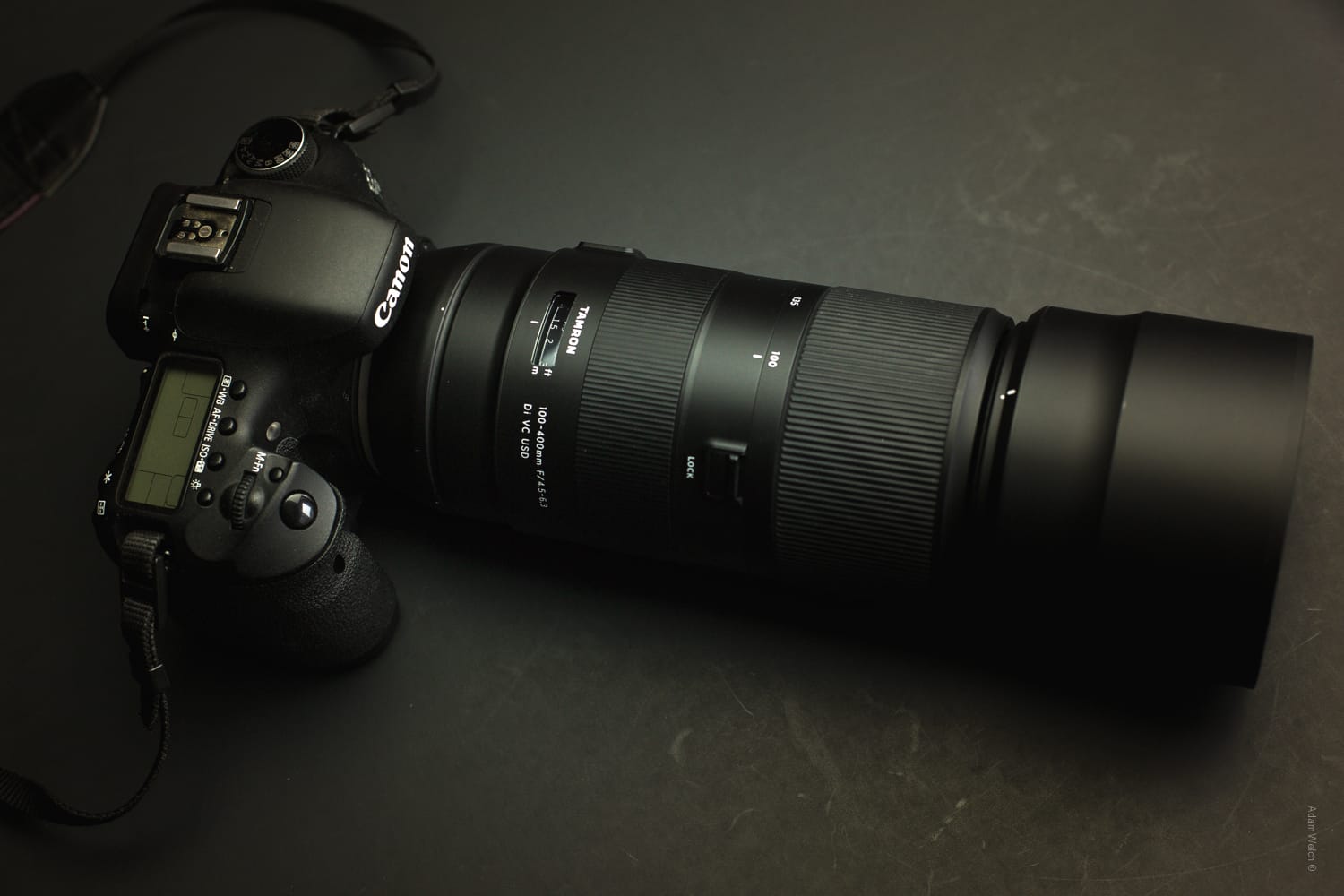
Out of the Box
The Tamron 100-400mm was impressive right from the box both in terms of its compactness and silky aesthetics. It’s a lens that is incredibly light in the hand coming in at around 2 ½ pounds (1.1kg) which makes it about an ounce lighter than one of it’s closest cousin the Sigma 100-400mm F5-6.3 and nearly a full pound less than the estimable Canon EF 100-400mm f/4.5-5.6L IS II USM. Here’s a full list of specifications from Tamron for the Canon mount version I tested:
| Information | Values |
|---|---|
| Model | A035 |
| Focal Length | 100-400mm |
| Maximum Aperture | f/4.5-6.3 |
| Angle of View (diagonal) | 24° 24′ – 6° 12′ (full-frame) 15° 54′ – 4° 01′ (APS-C) |
| Lens Construction | 17 elements in 11 groups |
| Minimum Focus Distance | 1.5m (59 in) |
| Maximum Magnification Ratio | 1:3.6 |
| Filter Fize | φ67mm |
| Maximum Diameter | φ86.2mm (3.4 in) |
| Length | 199mm (7.8 in) Canon 196.5mm (7.7 in) Nikon |
| Weight | 1,135g (40 oz) Canon 1,115g (39.3 oz) Nikon |
| Diaphragm Blade Number | 9 (circular Diaphragm) |
| Minimum Aperture | f/32-45 |
| Image Stabilization Performance | 4 Stops (CIPA Standards Compliant) |
| Standard Accessories | Lens hood, lens caps |
| Compatible Mounts | Canon, Nikon |
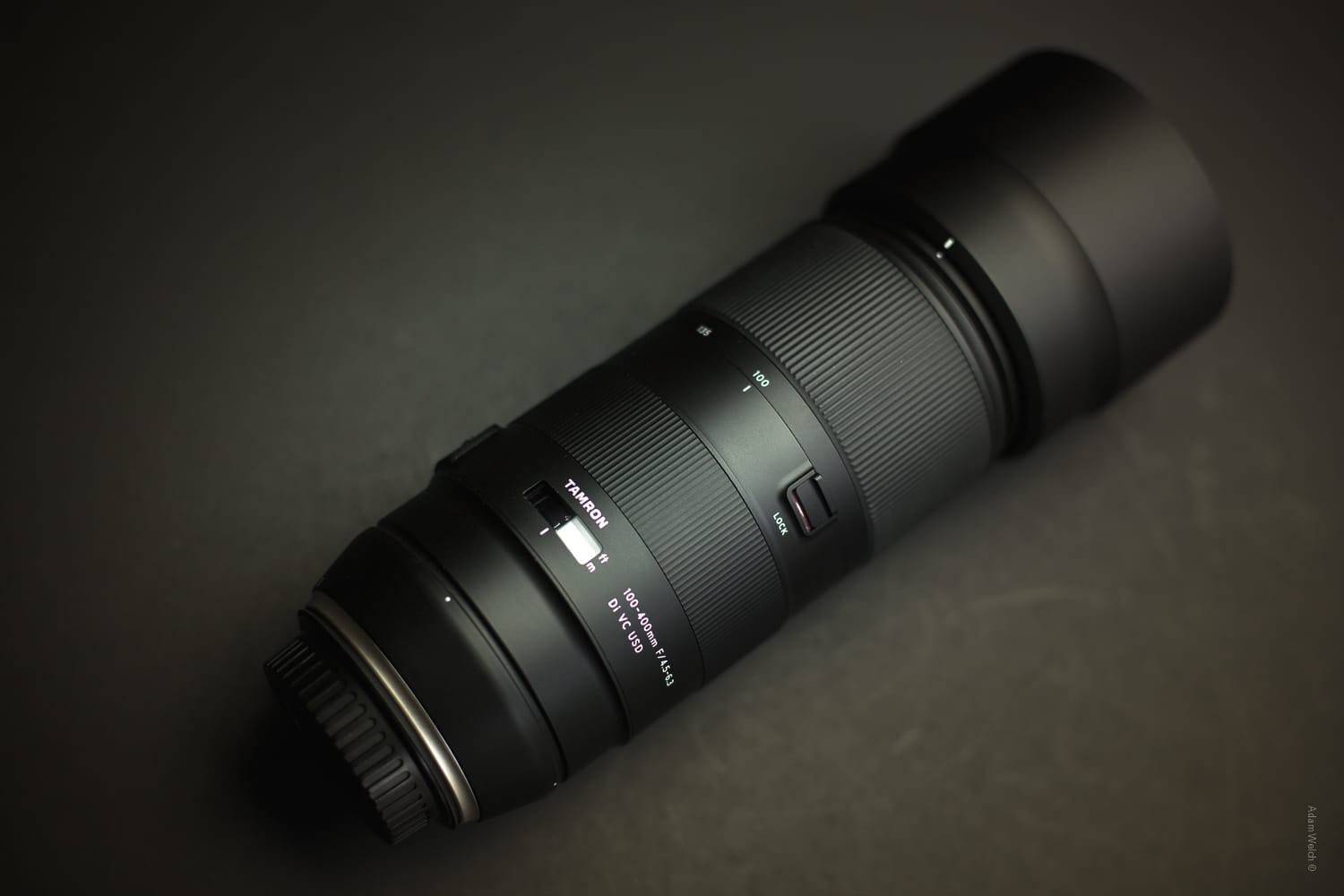
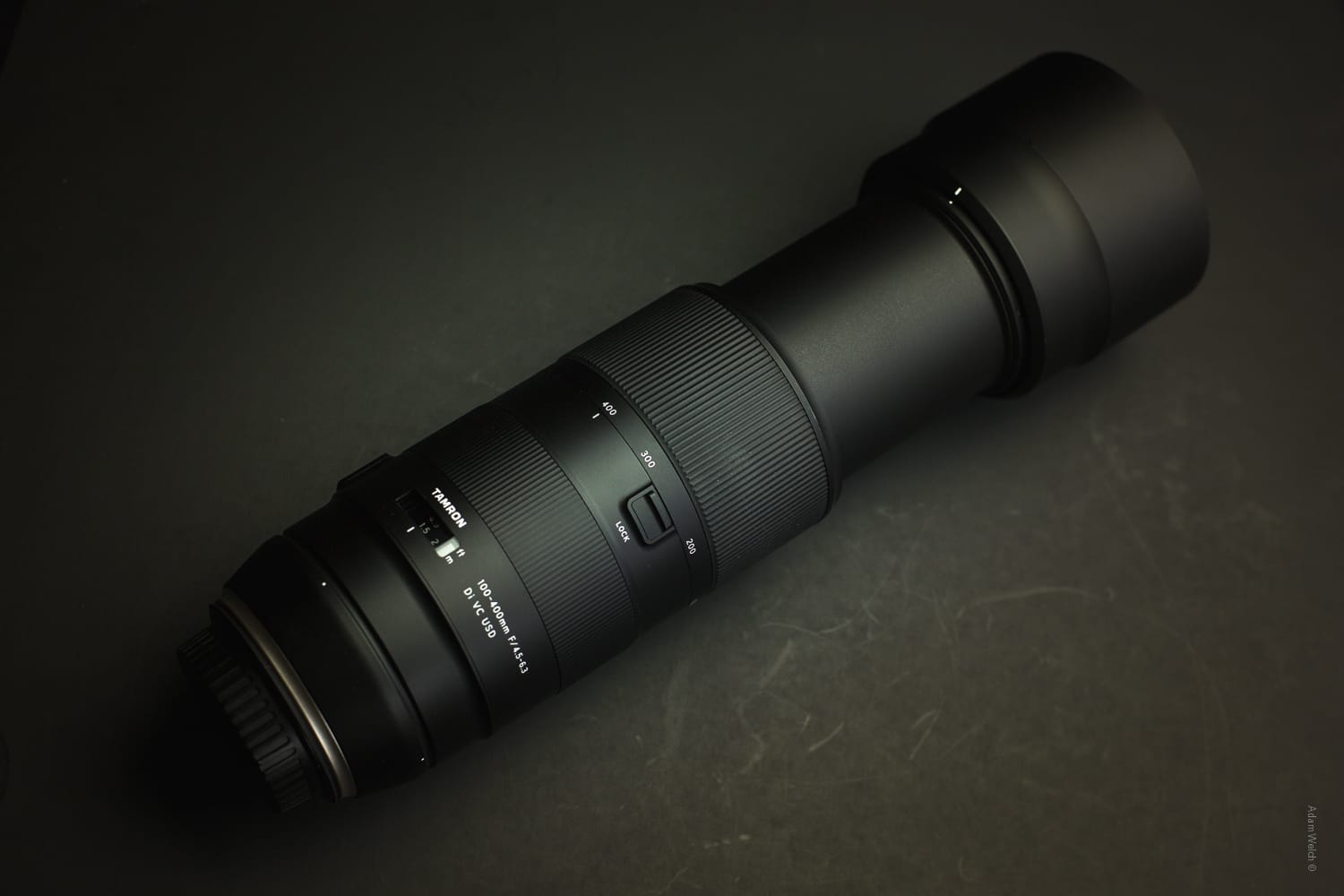
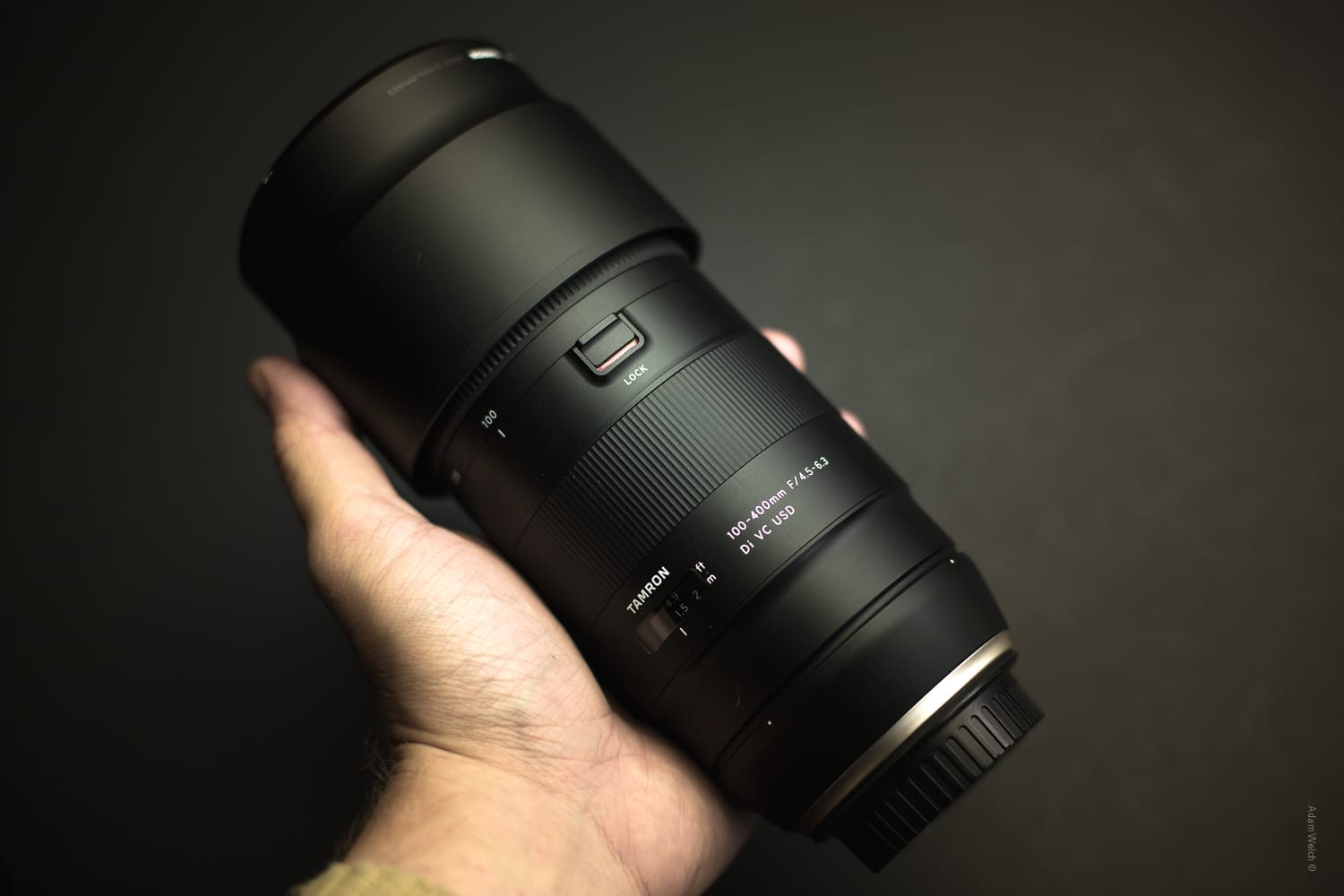
Overall, I’m in love with the looks of the newer Tamron lenses. Being somewhat of a minimalist (except for tacos) I enjoy the subdued yet classic appeal of the matte black finish and sparse markings. The look fits great with virtually any camera or camera person. Of course, the physical attractiveness is great but how does the form compliment the function? After all, the proof is in the photographic pudding.
Build Quality
The relative lightness of the 100-400mm does not detract from it’s solidity. While it’s a well balanced piece of glass when mounted to my Canon 5D MK3 the heft of the lens screams heavy-duty quality. The focus and zoom rings are both rubberized and offer a nice grip which is to be expected for a lens geared towards outdoor and sport shooters. All of the switches are crisp and each one is well reachable. The markings are all clean and well executed.
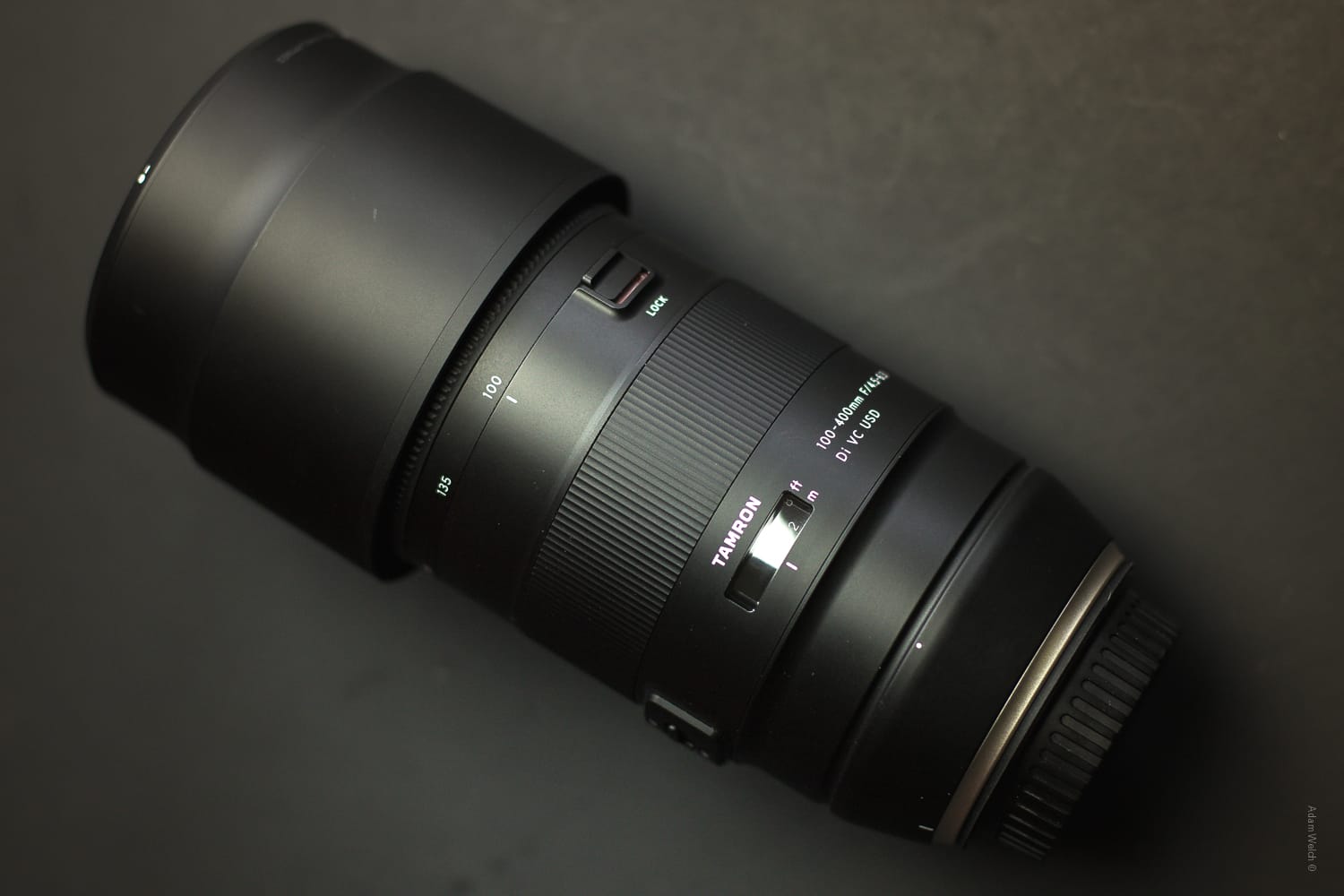
The filter size for the Tamron 100-400mm is 67mm which makes the lens barrel somewhat slim in diameter especially when compared to the Canon 10-400mm II which is a full 10mm wider.
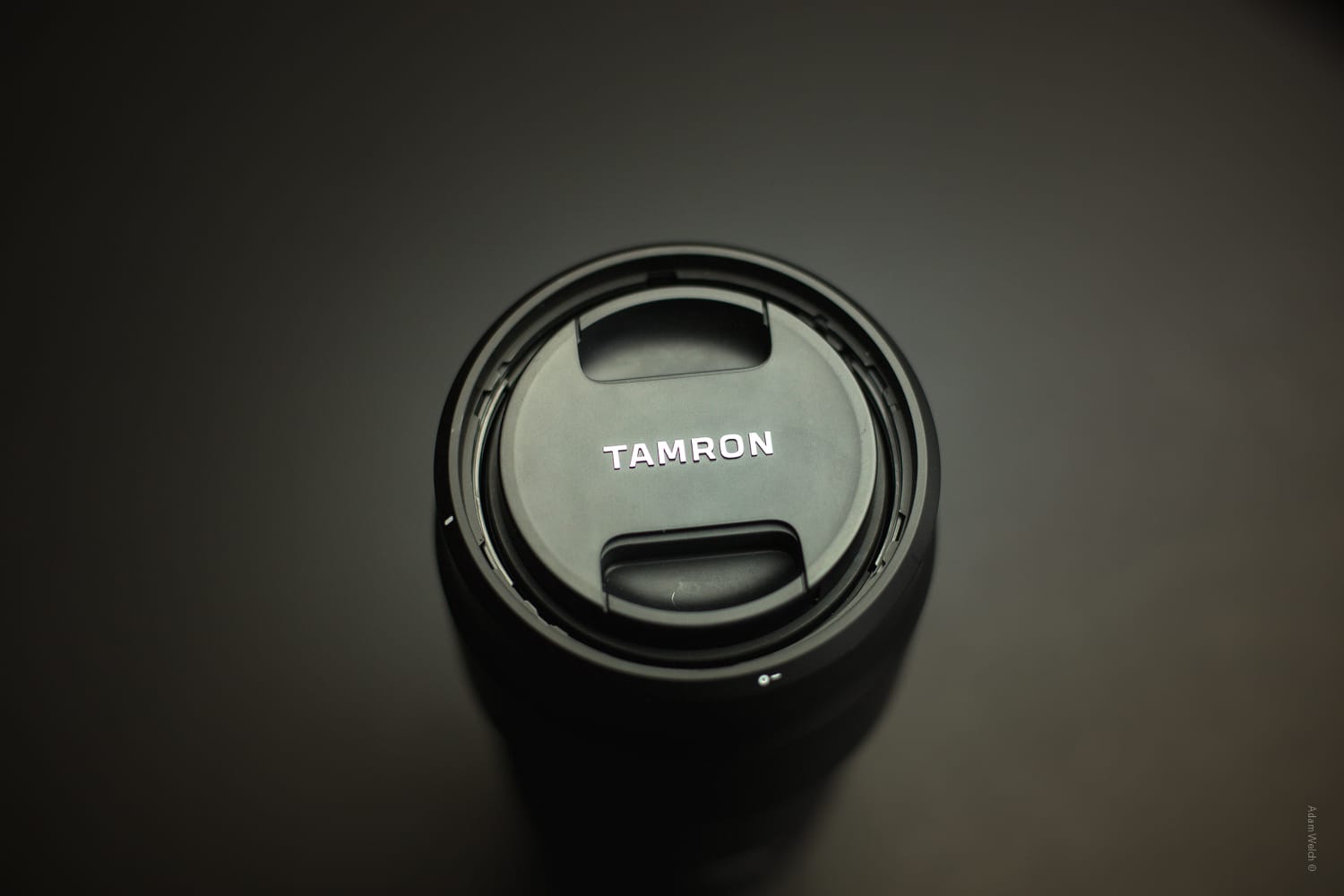
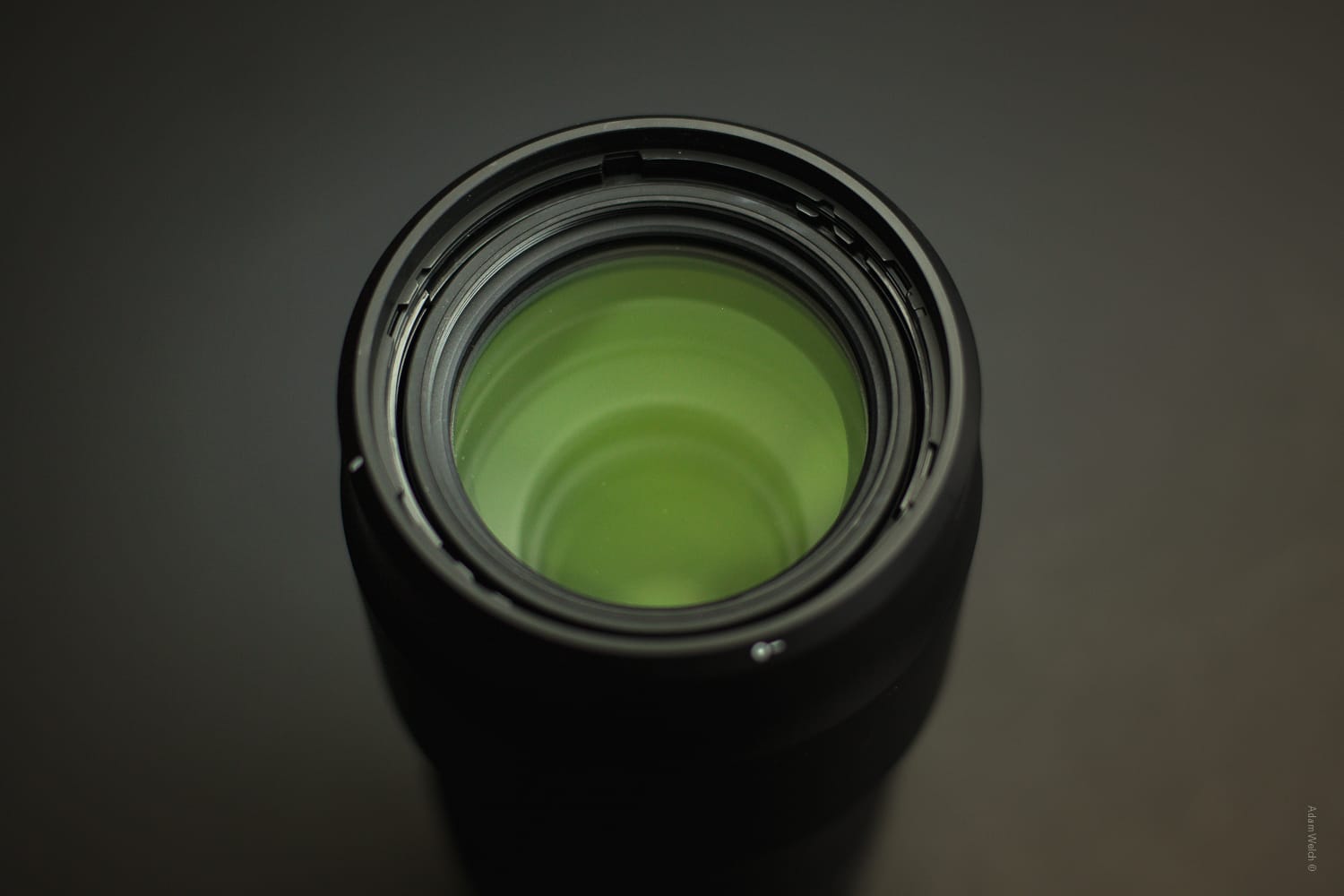
Weather sealing hasn’t been skimped on this lens either. The 100-400mm features the full weather sealing which has earned Tamron a special place among those who constantly find themselves in less than ideal weather conditions. The switches, zoom and focus rings, as well as the rear bayonet are all sealed.
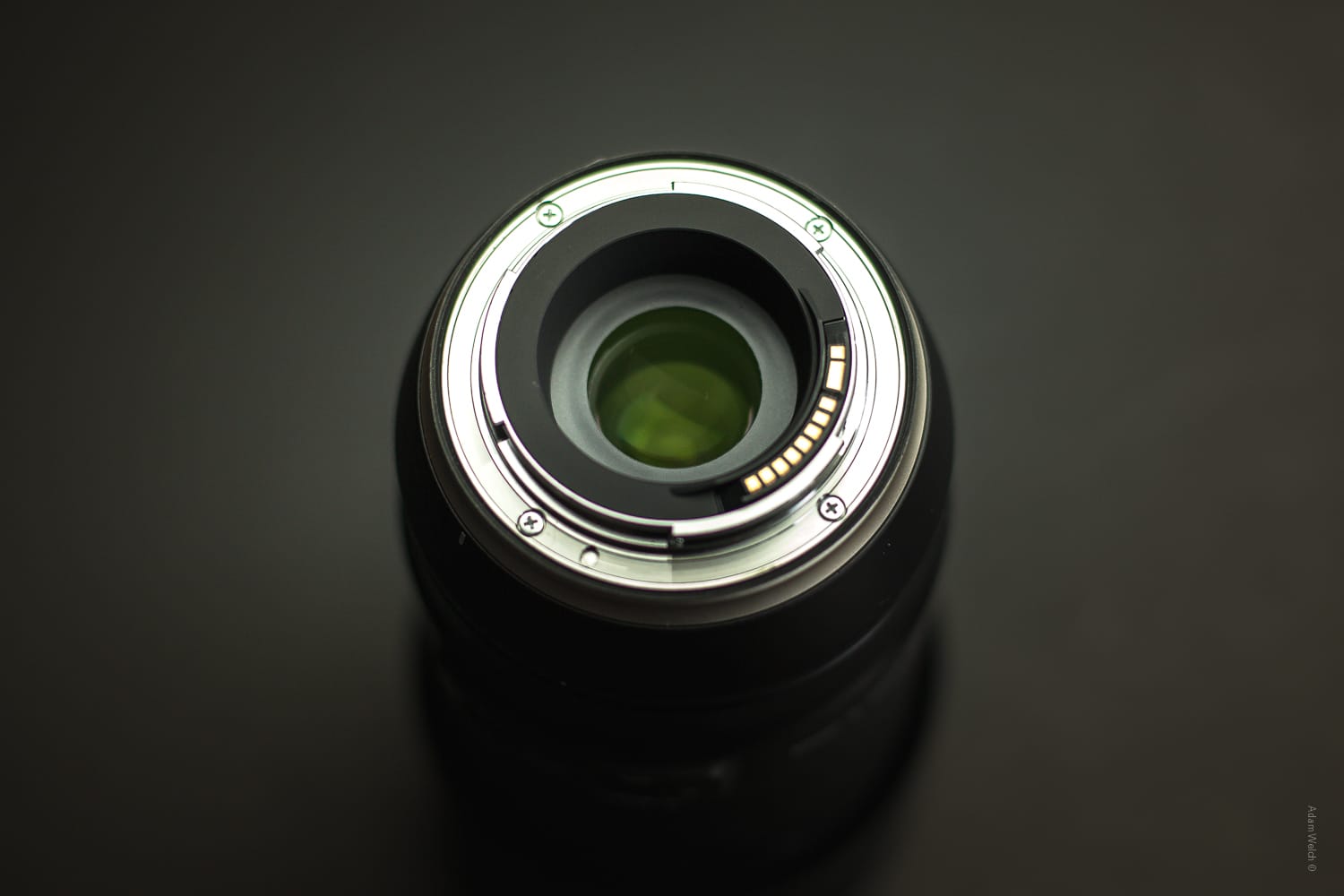
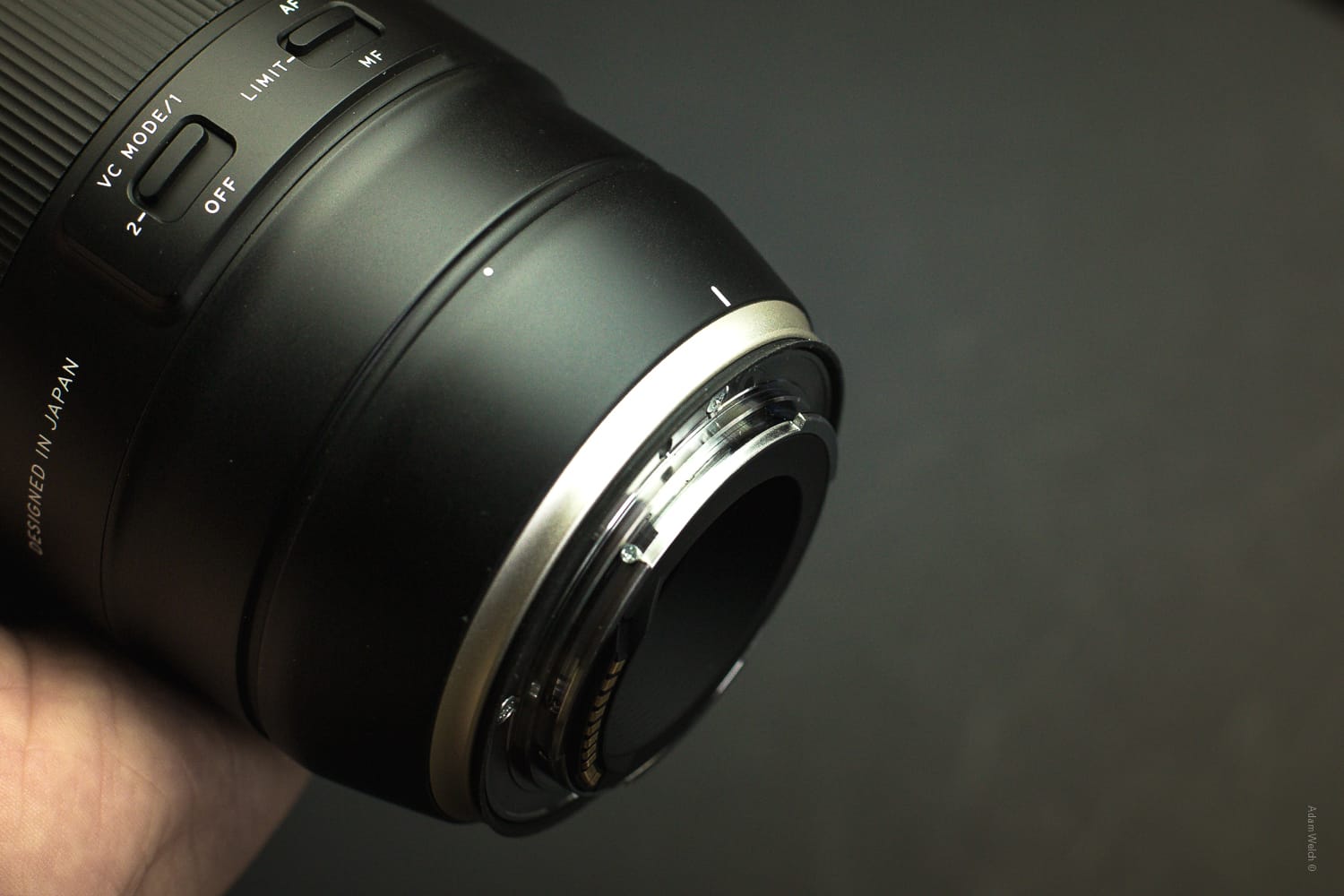
Conspicuously absent for a lens of this focal length is a tripod collar. This is something that has been brought up by many users but is apparently common with lenses similar to this from multiple second party manufacturers. Luckily, if you require a tripod collar it is available as an optional accessory for about $129 from Tamron. The schism is somewhat split when it comes to the collar. Personally, I don’t miss it but if it’s something that you absolutely must have then it is a point to consider.
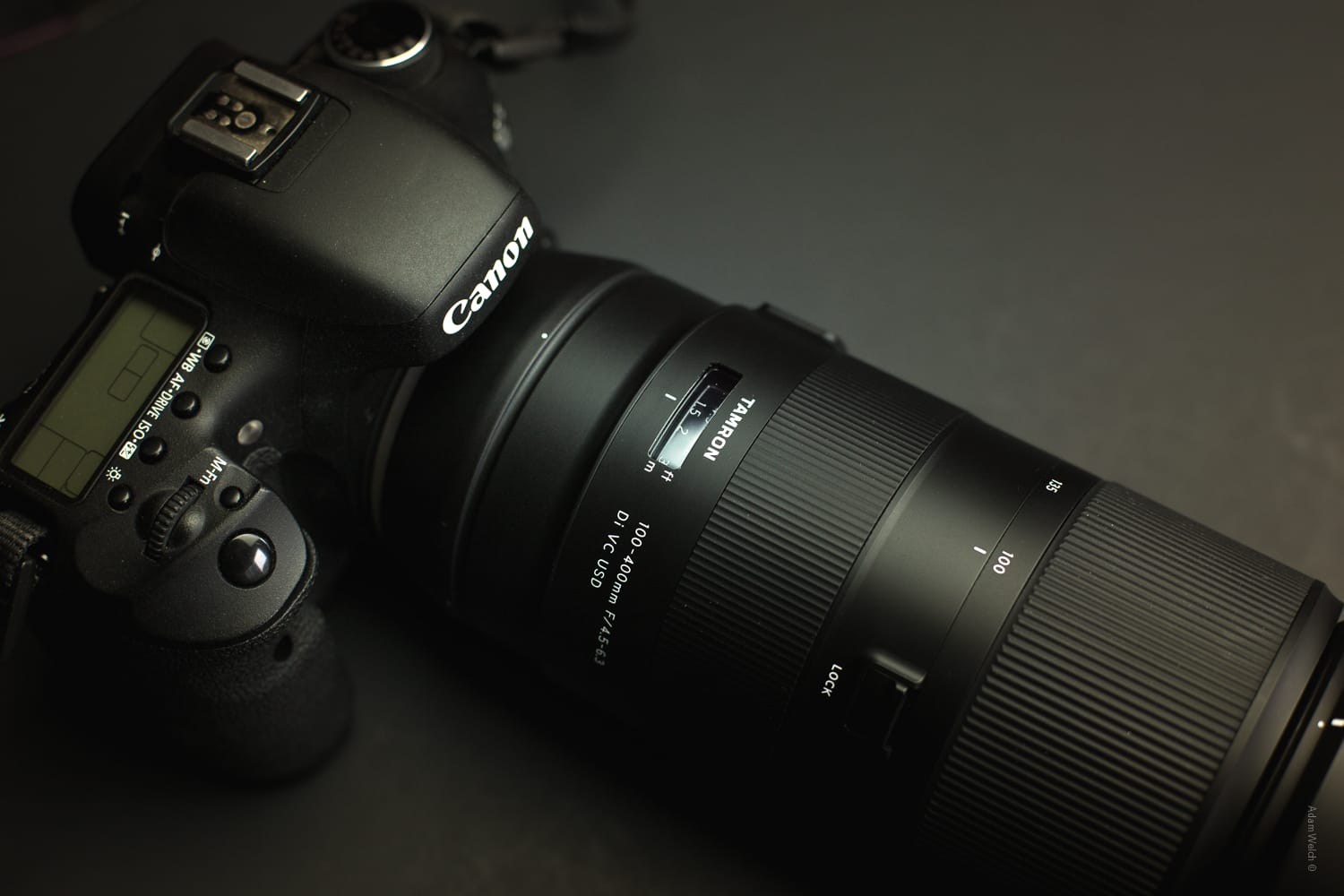
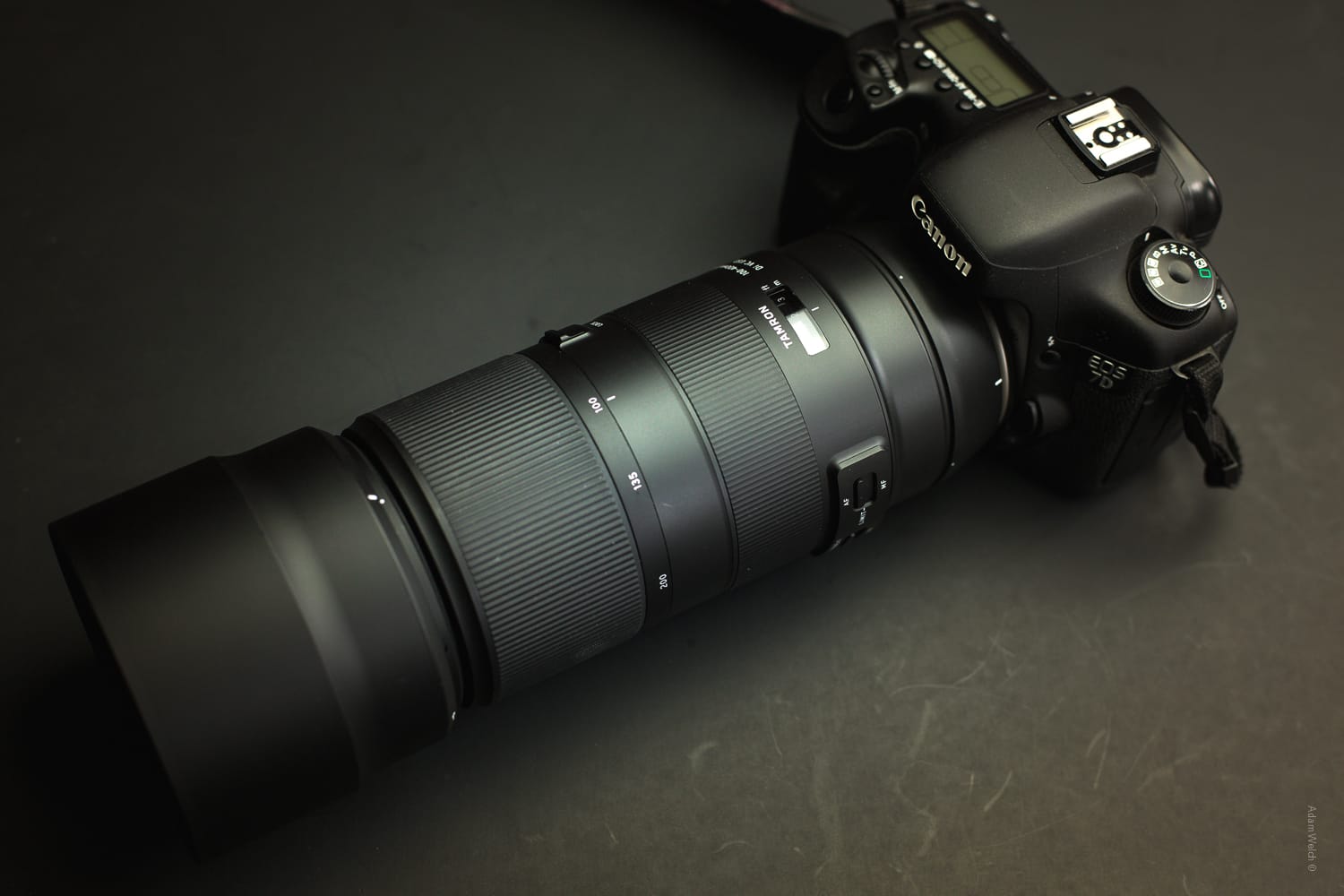
Last but certainly not least, Tamron has included a zoom lock switch which firmly secures the lens at 100mm when engaged. The lens was hiked with for over five miles in some cases and the zoom never drifted.
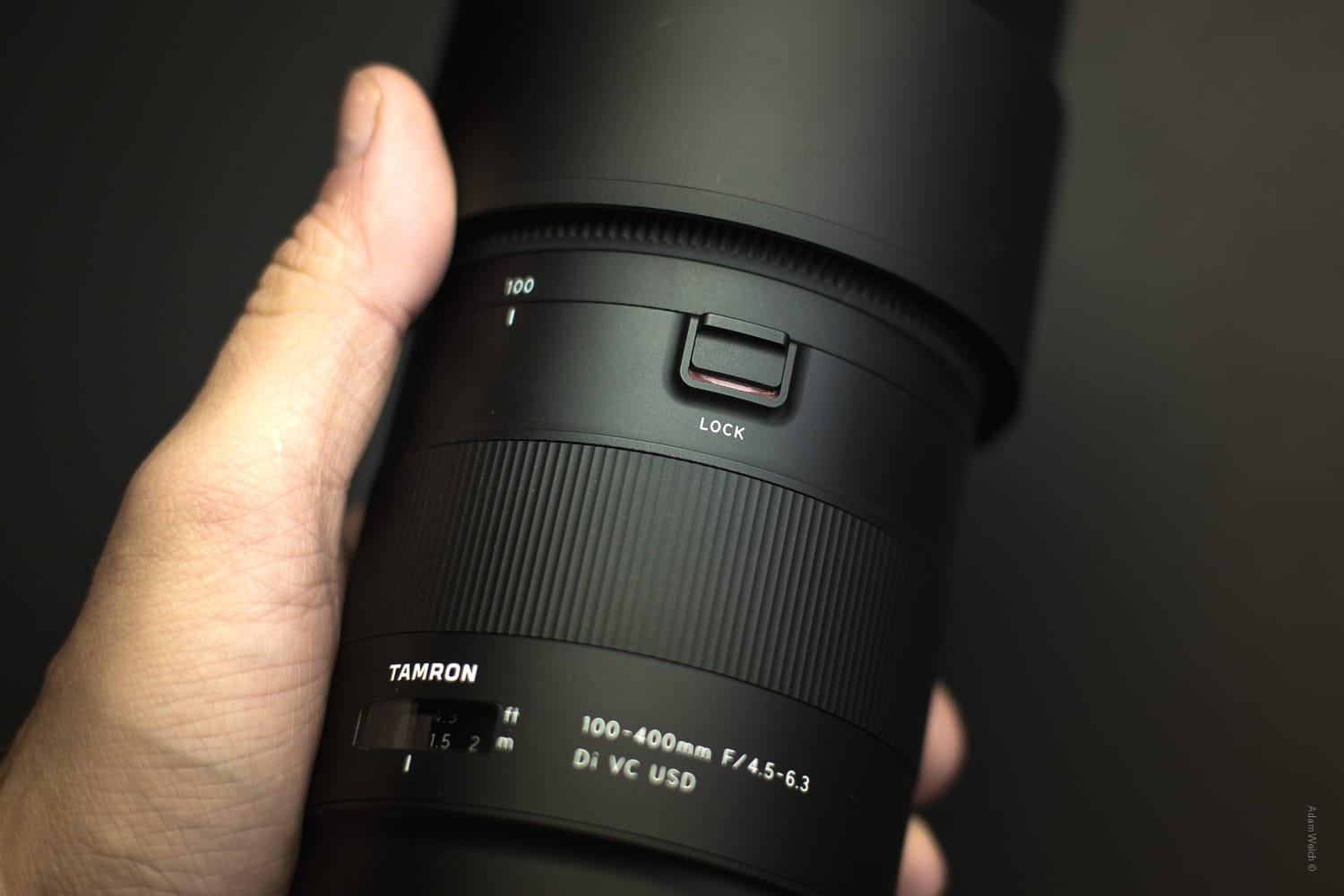
Image Quality
The images produced with the Tamron 100-400mm f/4.5-6.3 were outstanding. I’ll talk a little more about the blazing auto focus speed and image stabilization a little later but for now we’ll focus on the actual images in terms of sharpness, contrast and color rendition. I’m happy to say that in each of those categories the Tamron proved to be exceptional. The colors produced were vibrant and true to life. Contrast at both ends of the focal range was great and offered wonderfully crisp transitions between light and darks.

Shot at 400mm and f/6.3

Shot at 100mm and f/4.5
During the late evening blue hour the lens proved to convey the cool tones and contrast magnificently even when spiking the ISO.

Shot at 143mm and f/5.6 at ISO 6400
The sharpness of the photos were also impressive. Not only where they consistently sharp in the center but also at the corners. Have a look at these two images which were obtained at the short (100mm) and long (400m) ends of the lenses focal range with both employing the respective maximum apertures.
The first image was shot at 100mm with an aperture of f/4.5…

Now, let’s have a look at that bottom left corner.
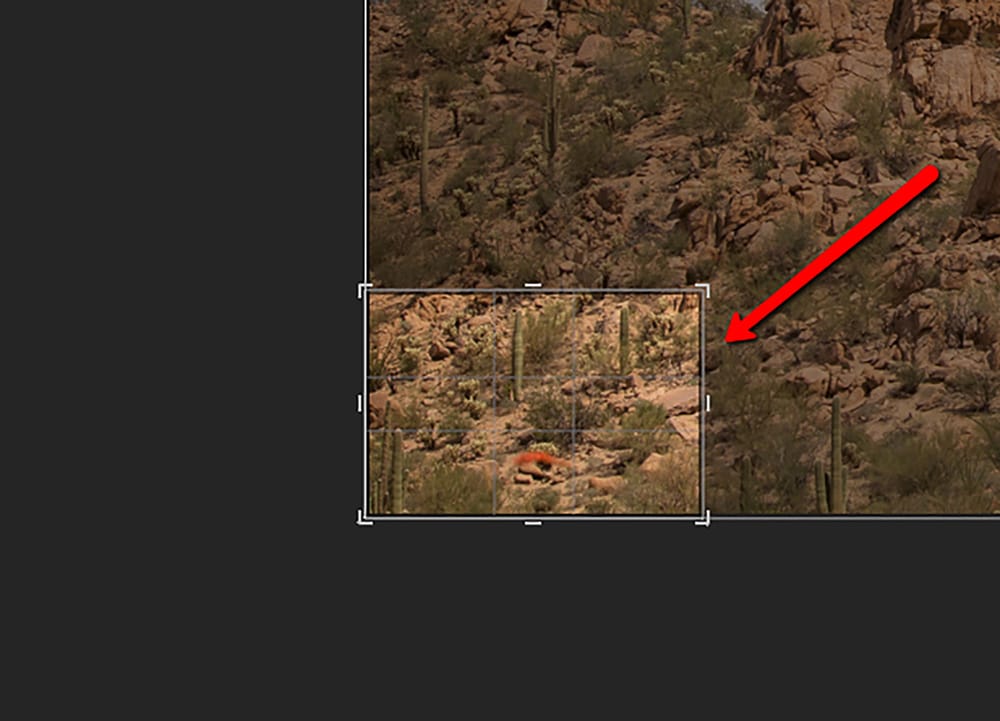
Even at the shortest focal length and widest aperture possible there is very little softening or distortion.

While there is some softening at the extreme edges this is the most evident the problem will be. As we increase the zoom to 400mm and the aperture to F 6.3 the softening all but vanishes.

Shot at 400mm with f/6.3
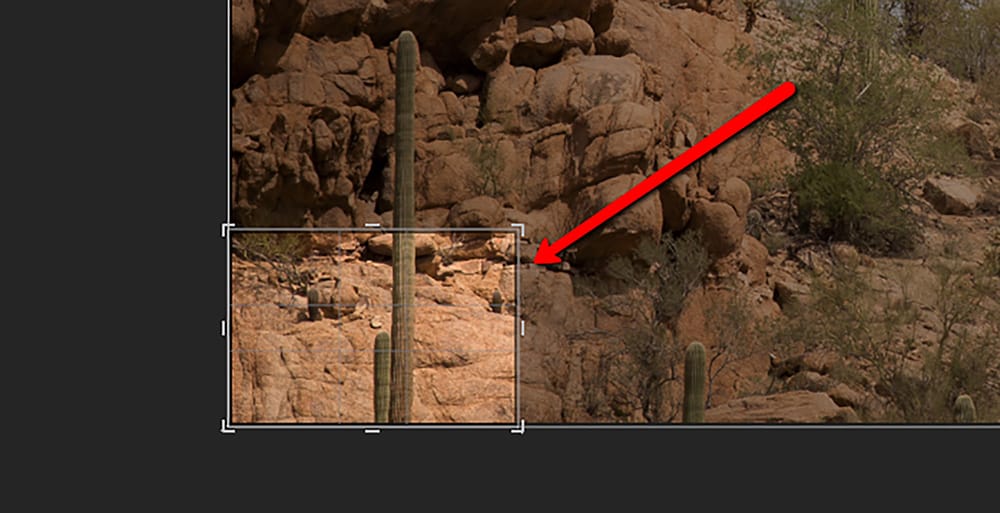

AF Performance
Lens of this focal length are generally geared for those who need to get up close and personal or at least closer to their subjects. This means that wildlife and sports photographers are the ones who will really get a lot of use from the Tamron 100-400mm. That being said, these are the same shooters who also require extremely accurate autofocus and/or image stabilization. How did the Tamron perform? Well, pretty fantastic. The AF was not only scorchingly fast with my Canon 5D MK3 but it was covertly quiet as well.
It tracked beautifully in AI Servo mode and also rendered fast focus when shooting in One Shot mode. Tamron attributes this to their Dual MPU high-speed control system. This is a microprocessor with DSP (digital signal processor) built right in which theoretically delivers increased AF speed and accuracy; from my use I would have to agree. Also included is a focus limiter function so that the user can determine focusing distances to be included or excluded from the AF.
The focus limiter can be customized using the TAP-in console which is available from Tamron.
Image Stabilization
If you’ve ever read some of my other evaluations of Tamron lenses in the last couple of years you’ll know that I rate Tamron’s image stabilization(vibration control) as one of the best I’ve encountered. Designated as ‘VC’ the camera shake reduction available truly is astounding and the 100-400mm is know exception.
Three VC modes are achievable for use in a variety of situations. VC mode 1 is a general purpose stabilization while VC mode 2 is used for panning when only one plane of movement requires VC. And of course if you’re feeling lucky you can completely turn the system off as well.
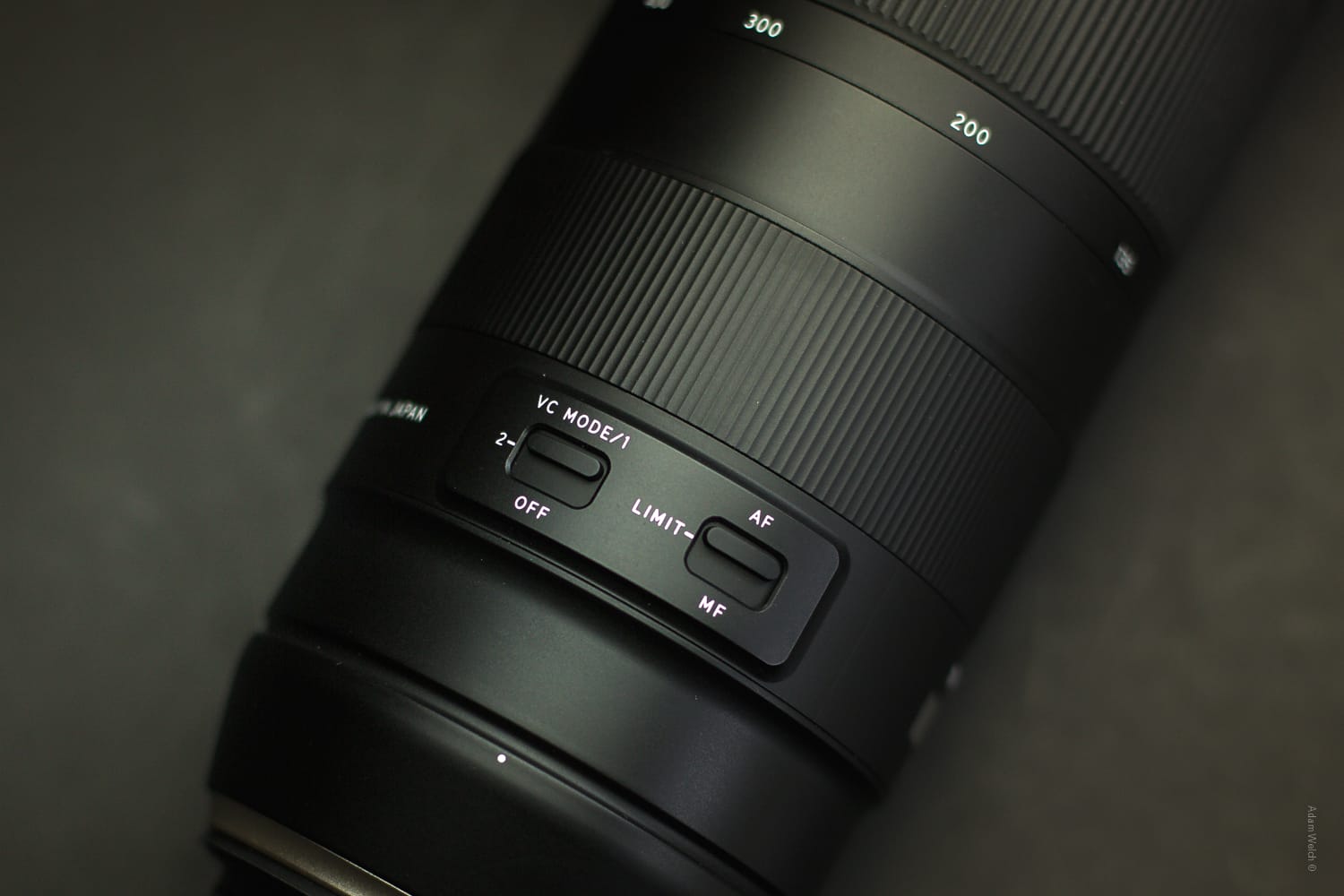
Tamron lists the VC as being able to compensate for approximately 4 stops of exposure. Have a look at these next two images which we’re both shot handheld using a 400mm focal length and a shutter speed of 1/50th of a second. The first is without the VC engaged:

Note the highly evident image shake. Next, I made another image at the same exposure except this time I set the lens to VC mode 1…

The results speak for themselves.
Verdict
In a world where high quality lenses seem to be presenting themselves more readily (and cheaply) it’s great to see another outstanding option for a compact telephoto hit the market. The Tamron 100-400mm f/4.5-6.3 Di VC USD offers a solidly built package that combines excellent sharpness and contrast together with an image stabilization system that is, in my opinion, second to none.
As it is intended for both full frame and crop sensor cameras it will fit a wide range of platforms and serve both pros and hobbyists alike. The 100-400mm goes for around $799 USD and is a great value for those needing a compact high zoom lens that can cope well in harsh conditions while offering superb image quality.
